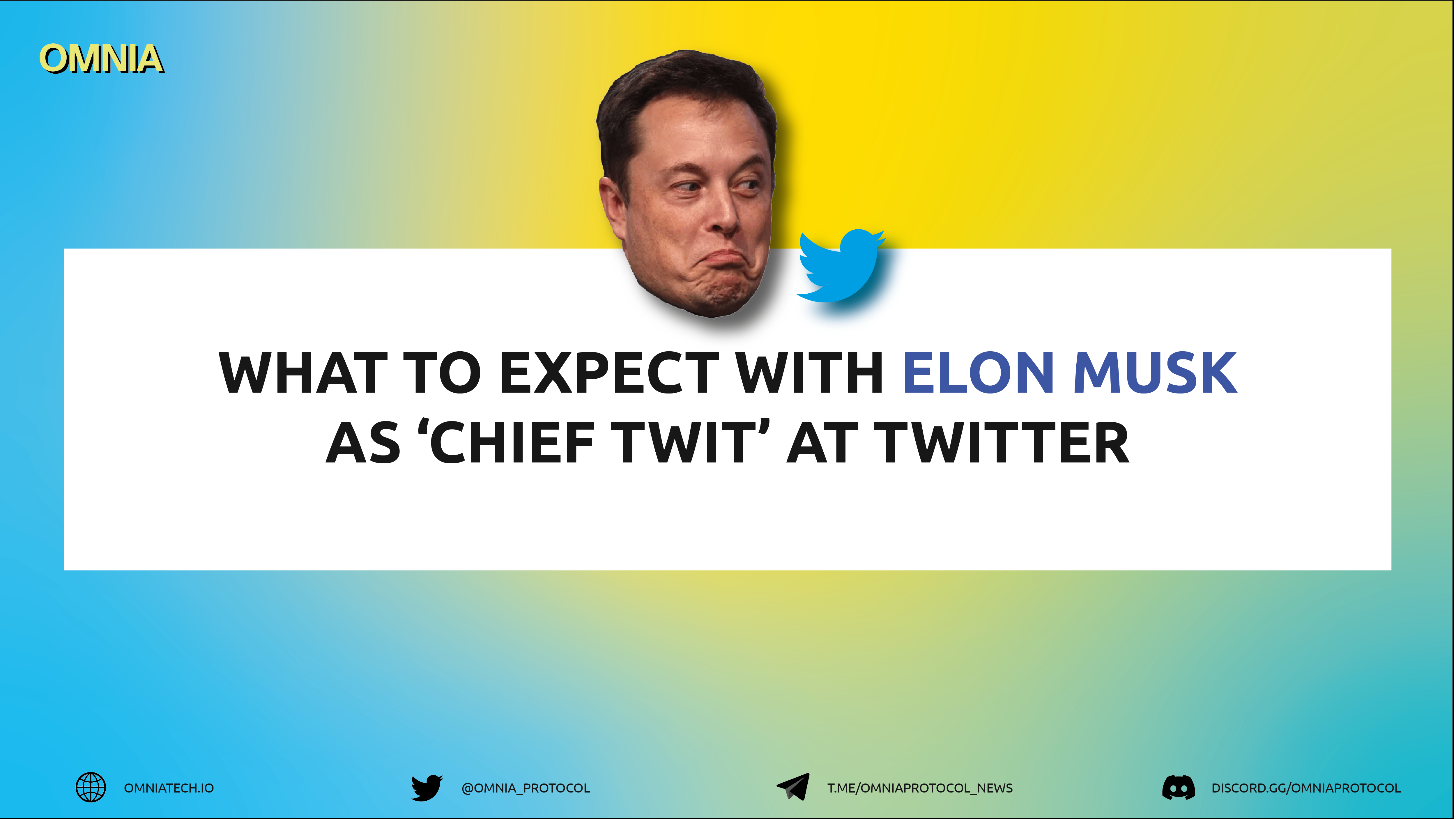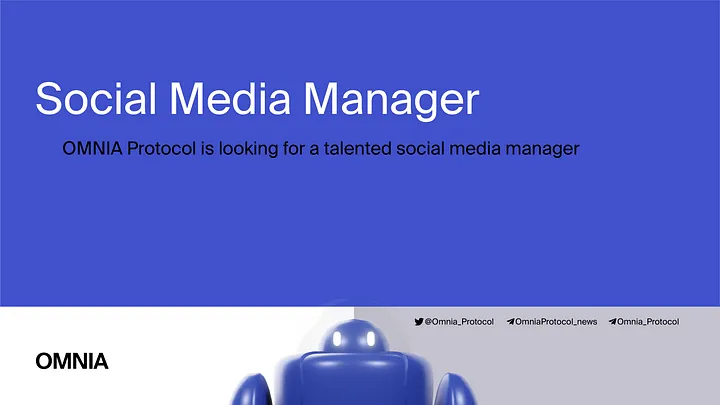
Elon Musk is buying Twitter. What does this mean and what are the possible drawbacks ?
A week ago, Twitter’s board of directors finally accepted Elon Musk’s bid to buy the company, ending weeks of speculation about whether the CEO of Tesla would eventually manage to close the $44 billion takeover deal.
Twitter and Other Centralized Applications Have Potential Pitfalls
1. Centralized Decision Making
Mr. Musk, who is also the CEO and Chief Engineer of Space X, the Founder of the Boring Company, and the Co-founder of Neuarlink has a lot riding on this deal as the world awaits to see what plans he has for the popular social media platform.
Also on the line is his reputation for handling multiple projects at one go. This includes his Space X mission to the moon (awarded by NASA), his own mission to Mars, and expanding Tesla’s presence in Texas and China, just to name a few. However, handling the day-to-day business of Twitter might not be a significant hurdle as he has already laid out his vision of the platform by constantly Tweeting his plans.
This, in turn, brings to light one downside of centralized applications such as Twitter in that all the decisions are left to one individual. Yet one could argue that a focused individual at the company’s helm is not a bad idea. For example, Jeff Bezos and Mark Zukerberg continue to steer Amazon and Meta despite having top roles in other companies.
In the case of Jeff Bezos, he is also the founder of the aerospace company of Blue Origin and the Bezos Expeditions Investment firm. Mark Zukerberg doubles up as the CEO of all companies under the Meta umbrella: Facebook, Instagram, Messenger, Whatsapp, Oculus, Mapillary, Workplace, Portal, and Diem.
But the applications mentioned above and companies are used by millions if not billions of people worldwide. The decisions of Elon, Bezos, and Zukerberg might very well be at par with those of Presidents, but without the oversight that comes with being elected by users of the respective applications to such crucial positions of power.
2. Centralized Servers and Infrastructure
Then again, Twitter is now a private company under Elon Musk. He bought it fair and square, abiding by the laws and processes of the United States, where the company is based and possibly together with a majority of its infrastructure. Regarding the latter, Twitter remains mute as to the exact location of its servers.
According to various ‘rumors’ over the years, the company has data centers located in Sacramento, California, and Atlanta, Georgia. Given the sensitive nature of free speech initially emphasized by Jack Dorsey and now Elon Musk, such a possibility makes sense. Twitter would want to have its servers within a country with protections such as those guaranteed in the First Amendment of the US Constitution.
Nevertheless, having Twitter’s infrastructure in one country and hosted by a handful of data centers brings us back to the issue highlighted in OMNIA’s analysis of the $615 million Axie Infinity hack.
Firstly, the geographic diversity of Twitter’s servers becomes a concern, particularly if they are located in one of the three electricity grids serving the United States. The US has three major electricity grids: the Eastern grid, the Western grid (separated by the Rocky Mountains), and the Texas grid. Failure of one of these grids to the magnitude experienced in Texas in February 2021 could result in tremendous downtime for Twitter on a global scale.
Additionally, California, where Twitter’s servers are allegedly located, is prone to annual wildfires that could damage electrical and internet infrastructure serving Twitter’s data centers.
Secondly, Twitter’s infrastructure is primarily hosted by Amazon Web Services and Google Cloud. Consequently, any downtime by any of the two will have a ripple effect on the availability of the platform. Such centralization provides a single point of failure for Twitter should one of the two cloud service providers go down.
Thirdly, Twitter’s infrastructure lacks the operator diversity present in truly decentralized blockchain networks such as Bitcoin and Litecoin. Twitter is the only company responsible for its servers and can be compared to Sky Mavis’s dominance in running nodes on the Ronin Network before the Axie Infinity hack. (The Ronin Network has since announced plans to increase its nodes from 9 to 11, then 21 and eventually 100.)
3. Proprietary Code
Another pitfall of centralized applications such as Twitter is that the software code behind the social media platform is proprietary. This means that only authorized employees and contractors can access the source code. Consequently, there is no way for well-intending developers at the company, or Twitter community members, to audit the code for any vulnerabilities.
Such code review could have potentially prevented the July 2020 hack on Twitter. During the event, the perpetrators accessed high-profile accounts, such as those belonging to Barack Obama, Kim Kardashian, and Jeff Bezos, to scam people into sending them Bitcoin. By the time the exploit had been identified and users alerted, the hackers had stolen $118k worth of Bitcoin.
The incident showed how easy it was to perpetrate the Twitter network. According to the New York Department of State Services, ‘the Hackers used basic techniques more akin to those of a traditional scam artist: phone calls where they pretended to be from Twitter’s Information Technology department.’
Perhaps the attack might have been prevented or identified earlier had the Twitter source code been open-source, giving the global developer community a chance to test it for critical security vulnerabilities.
How Twitter and other Centralized Apps, Can be Improved
a. Wait and See What Elon Musk Has in Store for Twitter
So how can Twitter be fixed or improved?
To begin with, its new owner, Elon Musk, has already laid out elaborate plans on how he intends to improve the most prominent social media platform of our era. His Twitter page is full of possible solutions for the behemoth application that has come to shape the minds and opinions of its over 330 million monthly users. Therefore, one option is to take a wait-and-see approach as he plans to do the following:
- To increase free speech, decrease censorship, and make Twitter politically neutral
- Make the Twitter algorithm open-source to increase trust
- Declare an all-out war on spambots, ending the menace that has plagued Twitter for several years
- Authenticate all humans
- Introducing a subscription-based model that gives users an ad-free option
- Possibly adding Dogecoin as a payment option for verification
After successfully implementing the above changes, Elon Musk’s actions will likely have a ripple effect on the industry. Other centralized social media platforms such as Facebook, Whatsapp, Reddit, and more, will most likely implement similar changes to keep up with the pace and competition set by Twitter.
b. Decentralization of its Servers
Concerning providing redundancies for Twitter’s servers, perhaps a solution would be to have some of its backend infrastructure strategically placed within the facilities of the other companies Elon Musk controls. These facilities, such as Tesla’s, are located in Germany, China, Canada, and several states in the US.
However, given the current global-political tensions, Elon could keep the servers exclusively in the United States. Tesla’s plants are located in California, Texas, New York, Illinois, Nevada, and Michigan. Similarly, Space X has locations in California, Florida, and Texas. They, too, could offer a quick solution to spreading out Twitter’s infrastructure to provide redundancies in case of hardware failure.
c. Twitter DAO
Alternatively, the decisions about the future of Twitter could be put to a community vote, as Elon Musk has done on several occasions. His polls on Twitter are an indirect extension of a Decentralized Autonomous Organization (DAO) as he usually abides by their outcome.
One good example is the poll he held before buying his initial 9% stake in Twitter. The poll asked whether Twitter adhered to the principles of free speech. Over 2 million of his followers responded to the survey, with 70.4% of respondents agreeing that Twitter did not guarantee free speech. The poll results probably played a significant role in Elon deciding to buy Twitter entirely.
Elon’s habit of consulting his Twitter followers could be the genesis of an actual Decentralized Autonomous Organization created by community members and not necessarily by him. The Twitter community taking charge of such a DAO project is ideal as it will remove any potential bias from its current owner.
d. Blockchain-based Alternatives Such as BlueSky, Steemit, Hive, and Society2
Then again, Twitter is now a private entity. Implementing the changes mentioned above might be a herculean task. Elon Musk has financial obligations to fulfill to the banks that fronted him the cash to make the purchase. Therefore, creating a sustainable revenue stream is a major priority for him to finance the loans in a timely manner.
Consequently, any decentralized or blockchain-based solution for Twitter might lie with existing solutions such as BlueSky.
BlueSky is Twitter’s effort at creating a decentralized social network. It was launched in 2019 with a mission ‘to develop and drive the adoption of technologies for open and decentralized public conversation.’ Furthermore, the team at BlueSky is ‘creating a social networking ecosystem where users have a choice in their experience, creators have control over relationships with their audiences and developers have the freedom to build.’
The description of BlueSky, its development activity on Gitlab, and its online community provide enough clues that the social media platform is geared towards solving some of the drawbacks of centralized applications highlighted above.
In late April, the team at BlueSky clarified that the project originated with Twitter, but it is now an independent company currently focused on the research and development of a decentralized social network. The company received $13 million from Twitter to ensure it has the freedom and independence to carry out the task at hand. Additionally, former Twitter CEO, Jack Dorsey, is on its board, and a former Twitter security engineer is part of the team.
The team has published some of the R&D efforts at BlueSky, including clarifying that they are not building ‘a federated or peer-to-peer network, or as a blockchain network.’ The team at Bluesky explains that what they are building ‘could be described as a hybrid federated network with peer-to-peer characteristics.’
Other blockchain-based social media platforms that have tried to, or are trying to solve, the decentralization problem include Voice on EOS, Society2 on IOTA, Peepeth on Ethereum, Sapien on Ethereum, Diaspora, Steemit, and Hive.
Conclusion
Summing it up, Elon Musk’s initial bid and final purchase of Twitter have brought to light several drawbacks of centralized social media applications. They include centralized decision-making, servers and infrastructure, and proprietary source code which is inaccessible to developers.
Elon Musk has proposed possible solutions for Twitter, including making its code open-source, amongst other solutions, which will have to be observed with time.
Other possible solutions include decentralizing its servers by setting up redundancies in Tesla plants in the United States and abroad. The social media community can also create a Twitter DAO that excludes its new owner to help steer the company in a direction that they see fit.
Alternatively, solutions to established centralized applications such as Twitter lie in existing or up-and-coming decentralized platforms such as BlueSky, Voice, Society2, Steemit, and Hive.

